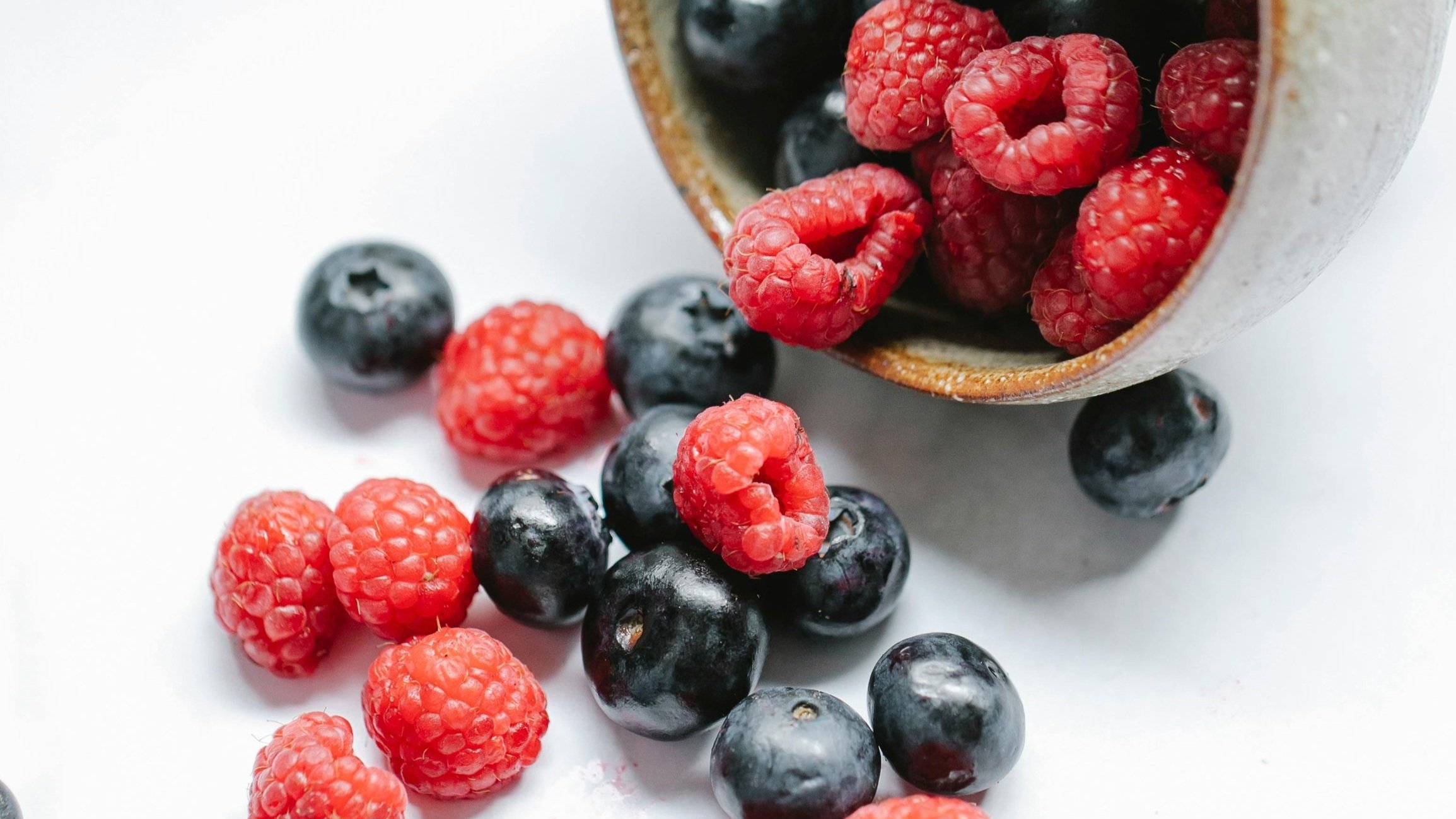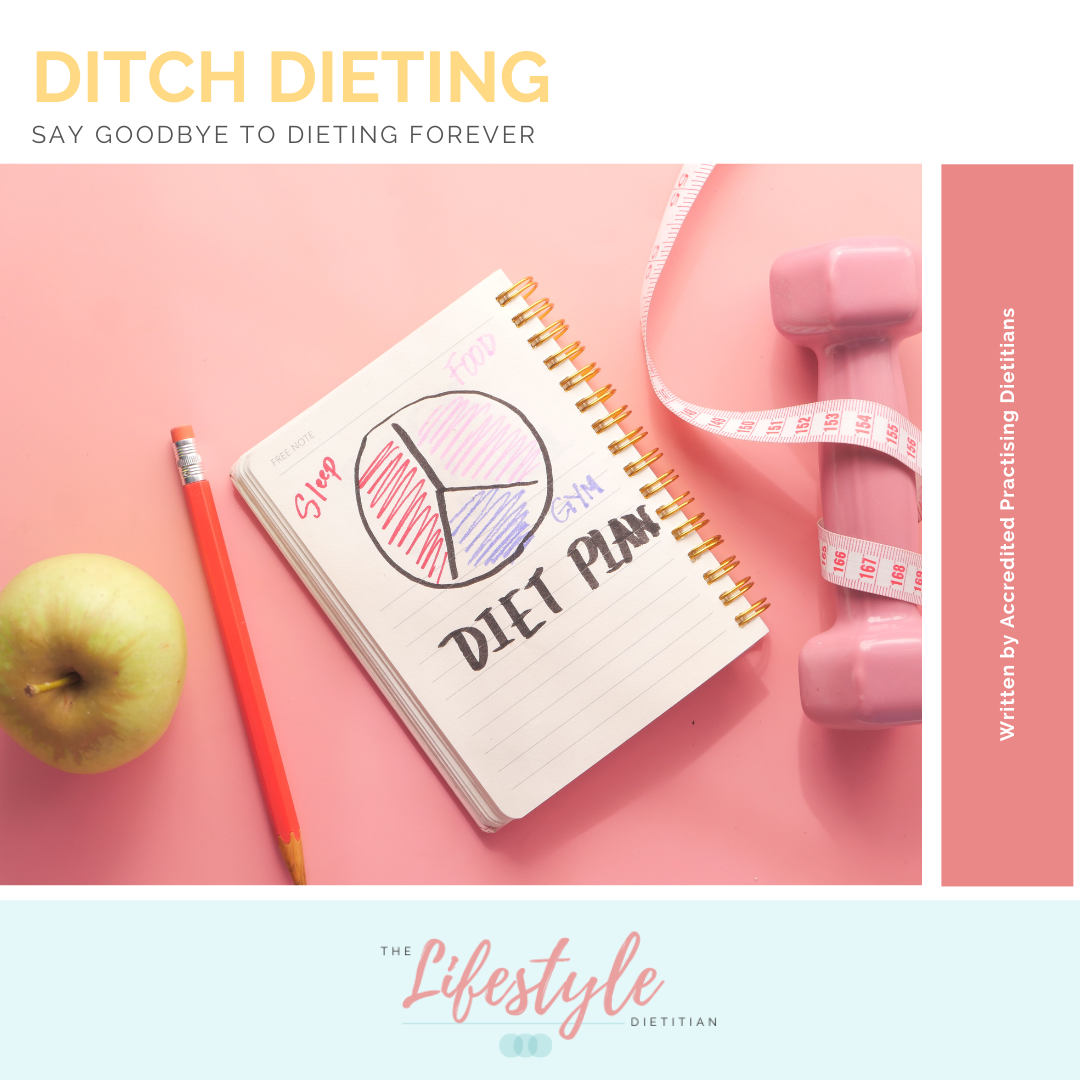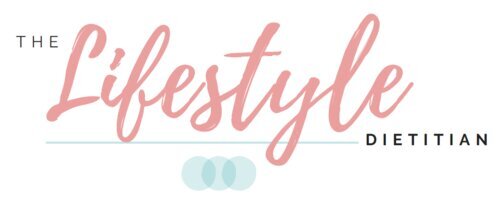Can Fibre Help Reverse Fatty Liver? A Dietitian’s Insight

Let’s face it, dealing with fatty liver can feel overwhelming knowing there is no medical treatment or pill that will fix it. Yet, many people are surprised to learn that the right dietary changes play a powerful role in reversing this condition.
In saying that, reversing fatty liver isn’t about drastic diets or extreme restrictions. In fact, one of the most effective ways to nourish and protect your liver involves increasing fibre intake. Sounds like a perfect fit for our approach at The Lifestyle Dietitian: focusing on foods to add in.
Why Fibre is Crucial for Reversing Fatty Liver
Fibre does more than just aid digestion, it plays a key role in reversing fatty liver by addressing three critical factors:
1. Insulin Resistance
When your body struggles with insulin, the liver ends up storing excess fat. Fibre helps balance blood sugar and improves insulin sensitivity, which can significantly reduce fat stored in the liver.
2. Fat Metabolism
Fibre helps your liver better manage fat molecules within the body. A diet rich in fibre supports the liver in breaking down and using fats efficiently, preventing fat from building up in the liver.
3. Gut-Liver Axis
The liver and gut are more connected than you might think! Fibre feeds beneficial gut bacteria, which produce short-chain fatty acids. These acids help reduce inflammation and support better liver function.
Top Three Fibre-Rich Foods for Fatty Liver
If you’re ready to take action, here are three high-fibre foods to add to your diet:
1. Berries
These nutrient-rich fruits, like blueberries and raspberries, are loaded with antioxidants and fibre. Studies have shown that the polyphenols in berries help reduce oxidative stress and inflammation in the liver. Plus, their high fibre content promotes gut health and supports the production of short-chain fatty acids. Add a handful to your breakfast, or try a new berry-packed recipe like our Chia Popsicle Bites, Strawberry Spring Salad, or Simple Strawberry Jam.
2. Flaxseeds
Tiny but powerful, flaxseeds are loaded with fibre, lignans and omega-3 fatty acids. These mighty seeds support liver health by reducing inflammation, promoting the breakdown of liver fats and improving insulin sensitivity thanks to being rich in a unique type of fibre called soluble fibre. Sprinkle over porridge, blend into a smoothie, stir through yoghurt or if you have a little extra time up your sleeve, try our Bake-at-home Seedy Crackers.
3. Legumes (Beans, Lentils, Chickpeas)
Legumes are an excellent source of fibre and plant-based protein. Even more impressive? The type of fibre they contain is “prebiotic”, meaning it promotes the growth of beneficial gut bacteria, leading to increased production of anti-inflammatory by-products that reduce inflammation and fat buildup in the liver. Plus, they’re versatile and easy to add to soups, salads, or even make into a tasty dip! If you’re new to legumes and need recipe inspiration, boy do we have lots for you. Try our Spinach and Red Lentil Dahl, Fibre Filled Cosy Cottage Pie, Gut Loving Pumpkin Soup, Cookie Dough Protein Balls or Crispy Roasted Chickpeas.
Managing fatty liver doesn’t have to be a restrictive or complicated but it does require consistent steps. Small, sustainable changes, like adding more fibre, will compound over time to reverse fatty liver. And, we’re here to guide you every step of the way. We don’t just hand you a meal plan and send you on your way - we work with you to create long-lasting changes by combining personalised nutrition with a focus on behaviour change. Our team is here to help you feel empowered and confident in achieving sustainable improvements without feeling overwhelmed.
Ready to take control of your liver health and feel more confident in your food choices? Book an appointment with our team today.
LOVED THIS? YOU WILL ENJOY THIS…

THE MEDITERRANEAN DIET EBOOK: BEGINNER'S GUIDE TO EATING MORE MEDITERRANEAN
Your one-stop guide to eating more Mediterranean. This ebook will leave you confident in taking the principles of the Med Diet and whisking, stirring, simmering them into meals that truly taste delicious.
Over 20 Dietitian-curated drool-worthy recipes, covering breakfast, lunch, dinner, dressings and snacks. Plus, a practical snack product guide with everyday eating tips and a weekly challenge list to tick off.
Like a cookbook but with a twist. Because each recipe, tip and suggestion is Dietitian-approved and tested.
HUNGRY FOR MORE? CHECK OUT OUR LIBRARY OF ARTICLES AND RECIPES WRITTEN BY OUR DIETITIANS:
Gut health plays a powerful role in managing endometriosis symptoms, especially through its impact on oestrogen levels, inflammation and digestion. The good news? It’s about adding in foods, not an extreme or restrictive diet. Here’s what the science says about the gut-endometriosis connection.
Have you been told to "just cut out salt" to lower your blood pressure, but feel like that is overwhelming and well… restrictive? Or, wish there was more to it than just avoiding salt? You're not alone. But here’s the good news: it is not just about what you take away, it’s also about what you add in. Foods rich in potassium, magnesium, calcium, nitrates and fibre can actively lower blood pressure. Read on to learn how and what foods you can focus on “crowding in”.
A lot of advice about reducing cholesterol focuses on what to cut out. But, that approach is demotivating, restrictive and… unsustainable. What if you focused on adding in foods instead? The great news is, consuming more of certain nutrients can lower cholesterol and make a meaningful difference. Let’s break down what those are and our top 15 foods to crowd into your diet.
“Fermented foods” are often called “probiotics”, but are they the same thing? Although both words are used interchangeably, turns out, this is a big misconception. Fermented foods are not all probiotics. Knowing the difference is important because whilst fermented foods and probiotics both contribute to gut health, they do so in different ways. Let’s break down what a true probiotic is, how it differs from fermented foods and what is best for your gut health.
Wholesome, festive and perfect for celebrating the holiday season, our Christmas Muesli recipe is a wonderfully balanced breakfast (or Christmas gift!) to embrace the holiday spirit. We’ve packed in not just the usual mix of nuts, seeds, rolled oats and warming cinnamon, but also a dash of extra virgin olive oil. This adds a healthy dose of anti-inflammatory and prebiotic goodness for your best health yet.
Scrambled, poached, sunny-side up and piled high on sourdough. Eggs are delicious. So, it can be jarring to think you need to give them up if you have high cholesterol. Some advice vilifies eggs, while other research says they’re fine. Cue feeling confused and stressed. Let’s separate the facts about eggs and cholesterol so you can sidestep unnecessary food restrictions and understand how eggs can be enjoyed without impacting your health.
Refreshing, creamy and nutrient-packed. This green smoothie blends spinach, banana, brazil nuts, milk, and chia seeds for a delicious treat. The key ingredient? Brazil nuts! They’re packed with selenium, a mineral that supports thyroid health and reduces inflammation, that’s a big tick for reaching your health goals with PCOS, endometriosis, fatty liver, fertility and insulin resistance.
Here’s a question we get asked all the time: “How can I enjoy occasional treats without negatively impacting PCOS or insulin levels and feeling guilty?” . While most “experts” agree high sugar treats aren’t “good” for PCOS and insulin resistance, completely avoiding them can turn into a classic restrict-overeat-repeat story. Instead, here are three ways to enjoy treats in a balanced way that still align with your PCOS and insulin resistance goals.
Picture this: the holidays are approaching, there’s festive excitement in the air. You’re looking forward to gatherings, delicious food, and reconnecting with loved ones. But alongside that joy, there’s a familiar worry creeping in - concerns about what you’ll eat, how you’ll look, and how to manage it all. There’s even the urge to go on a strict health reset come January. Sound familiar? You’re not alone. So instead of dreading the festivities, explore these five practical ways to navigate holiday eating with more peace, flexibility, and joy.
Ever looked in the mirror or scrolled through your camera roll feeling disheartened and frustrated about what you saw? That’s poor body image rearing its head. When body image struggles seep into daily decisions, it can lead to cycles of restriction, disappointment, and exhaustion. But, improving body image isn’t about flipping a switch to feel endlessly positive all the time. It’s about developing tools to approach your body with compassion and understanding, even on the tough days. Here are our top three first steps to take towards a better body image.
These Greek Chicken Souvlaki Pita Bowls combine lean protein, fibre, and anti-inflammatory herbs for a wholesome, balanced meal that supports gut health, PCOS, insulin resistance, and heart health. We included a delicious mix of textures — think crisp veggies, juicy marinated chicken, and creamy Greek yogurt-based tzatziki — to show you healthy eating can be delicious. Perfect for meal prep, this Mediterranean-inspired bowl is an easy, nutrient-rich option for anyone looking to improve digestion, reduce inflammation, stabilise blood sugars, lower cholesterol and have sustained energy across the day.
Dealing with fatty liver can feel overwhelming. There is no medical treatment or pill to cure it. Fortunately, dietary changes like increasing fibre play a powerful role in reversing the condition and reducing inflammation. Here is our expert Dietitian breakdown of how fibre reverses fatty liver and the top three foods to include in your diet.
The string of words “you have fatty liver” is one of the most unsettling things to hear in your doctor’s consult room. When it comes to managing fatty liver, many people are told they need to lose weight. But, getting on top of fatty liver is so much more than that. It’s equally, if not more, important to focus on reducing inflammation and adding in liver-supporting nutrients so that your liver functions at its optimum. Here are our top five tips, sans extreme diets and restrictive eating.
It’s easy to think the best diet hack is to eat more or less of “xyz”. While yes, it’s true, changing what you eat will impact your health... this isn’t the secret. Reducing decision fatigue is. Life is packed with decisions, and come mealtimes, your brain is too tired to figure out what to eat. That’s normal. But the result? You end up ordering takeout or grabbing a quick (and often less nutritious) snack. So, here's what to do instead.
If your mornings are a chaotic scramble, and your go-to breakfast is a piece of toast (which, deep down, you know leaves you hungry by mid-morning), you’re not alone. The reality is, trying to find time to whip up a nourishing breakfast is overwhelming. But, if you’re battling energy crashes, cravings, or a constant snack hunt come 3pm, your breakfast needs a rejig. Stat.
Choosing the lowest calorie option makes perfect sense if you’re trying to lose weight. Eating low calorie foods feels like you’re in complete control of how much you eat and how much weight you lose. But is that really the case? Well, the research suggests otherwise. Always focusing on calories may leave you less satisfied, feeling more deprived and more likely to overeat later.
Afternoon cravings can leave you feeling frustrated and defeated. You’re not alone in dealing with them - the afternoon “downfall” is something many of us battle. But did you know there are a few common mistakes that can make those cravings even worse? Here’s what you should avoid, as well as some things to consider, if you’re tired of struggling with the afternoon snack-attack stress.
Yes, Chimichurri is famous for taking steak to a whole new level of flavour. But it really shouldn’t be limited to livening up meat. Spoon this vibrant sauce over chicken, fish, tofu, roasted vegetables and salads, or stir through pasta, rice and greek yoghurt for a creamy spin. The best part? It’s packed with polyphenols. These are potent antioxidants and prebiotics linked with reduced inflammation, improved gut microbiome diversity, cardiovascular health, better blood sugar balance and more.
Sugar is a hot topic. It seems like everyone is trying to cut it out of their diet, and fruit often gets caught in the crossfire. So, does fruit really have too much sugar?
Iron deficiency is one of the most common deficiencies worldwide. Truly getting enough iron into your diet requires quite some planning. From understanding the different forms of iron, to combining food sources that improve absorption and avoiding foods that block absorption, it becomes very overwhelming. So, here are four unexpected hacks to help boost your iron.
Our warming Vegetable Soup is the ultimate "Winter salad" that makes getting your daily dose of vegetables during the colder months a breeze. Packed with a comforting medley of vegetables, this soup is rich in immune-supporting vitamins, antioxidants and gut-friendly fibre. There’s no better way to nourish your health in Winter than this comforting soup.
So, you have low iron but, you’re time poor (who isn’t?). This one’s for you. Between remembering to take your iron supplement, dealing with fatigue, and juggling life, it’s a struggle to stay on top of eating enough iron. To help out, here are six pantry staples you should always have on hand to stay on top of managing iron levels when you have little to no time.
This Spinach and Red Lentil Dahl recipe ticks all the boxes: easy-to-follow, hearty, satisfying, comforting and nourishing. Lentils are an excellent source of plant-based protein and soluble fibre, brilliant for your best gut health yet and keeping your cholesterol in check. Make in bulk and serve with a scoop of creamy tangy Greek yoghurt to boost protein.
Stepping on the scale. It really is a source of anxiety and confusion for many of us. And, it’s easy to become fixated on the number staring back at you. But did you know that there are many factors that can make this number fluctuate up and down, beyond just your body mass? Here are 15 (of many!) factors and why it’s important to understand these.
Turns out, there is a clear link between eating disorders (or disordered eating) and gut symptoms. Think bloating, pain, gas, diarrhoea, constipation and IBS. It’s complex, multifaceted and… far too often overlooked. It’s also two-way. Eating disorders can cause gut symptoms and vice versa. But understanding what’s going on and how a Dietitian fits in will help you identify the best starting point to tackling your health goal.
Say hello to our Mediterranean Frittata. It’s a slow morning breakfast, a meal prep veg-packed lunch (nope, not another salad), and an easy dinner that feels special with shockingly little effort. And, its gut-loving. Because we stirred and sauteed some of our favourite prebiotic foods into this recipe.
We get it. Irritable bowel syndrome (IBS) can be frustrating. You’re desperate for a solution. Now. But before you go down a Dr Google spiral, here are five common mistakes that are best avoided.
Turns out, you can have your chocolate and eat it too (and support your gut health). With our prebiotic-boosted rocky road recipe that is. Prebiotics are the “food” for your good gut bacteria. When well-fed with prebiotics, your good gut bugs produce by-products linked with a whole host of health benefits. Our recipe marries heavenly dark chocolate, pistachios, extra virgin olive oil and BARLEYmax flakes as the star prebiotic foods with more crunchy delights to help you reach your best gut health yet.
Whether you're coeliac or have decided to go gluten-free, getting enough fibre is challenging. Many gluten-containing foods are rich in fibre. And, many products labeled gluten-free do not contain enough fibre, if any at all, to be a good replacement. Because we now know a gluten-free diet reduces the diversity of bacteria in your gut (particularly the good bacteria beneficial for health!) as a result of reduced fibre intake, here are three tips to meet your daily fibre goal.
We don’t know about you, but hot flushes jump first to mind when thinking about perimenopause and menopause. Not-so-welcome but an inevitable reality for many women, thanks to hormonal shifts during this transition. Yes, medication can offer relief (and there should be zero stigma in exploring this option with your doctor). But, changing your diet can also play a significant role in reducing hot flushes. Here’s how.






























